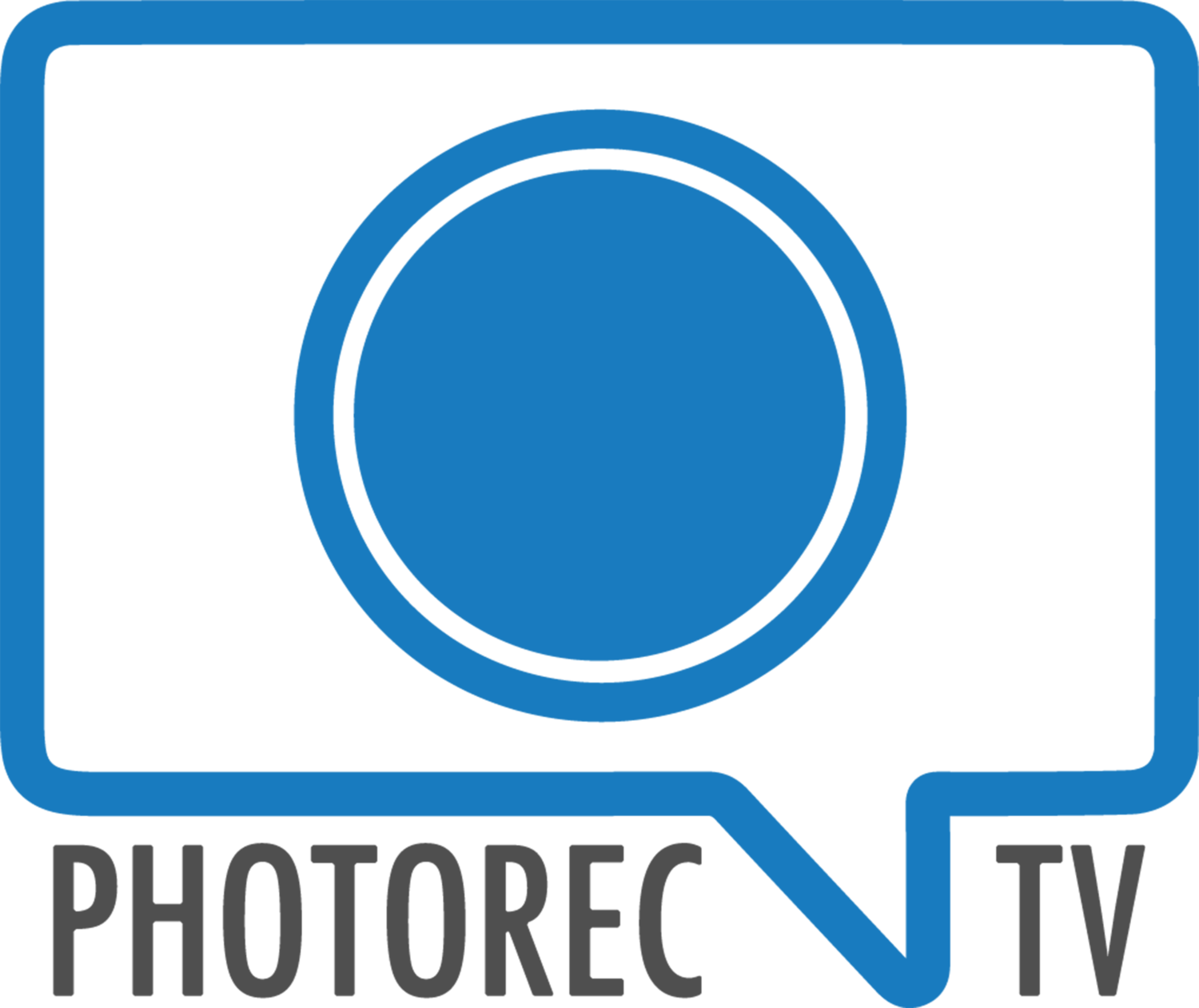Sony a6500 Announced: Speed, Stabilization, and a Touchscreen
/  Sony steps up with the new a6500, serious speed in a very small mirrorless package. The a6500 comes with 5-axis in-camera image stabilization and touchscreen capability; the two major points everyone asked for after the a6300 was released in February. Considering Canon and Nikon’s release schedules are yearly it seems a bit early for a new model but with a 24.2MP sensor, 11 frames per second, and 4k video it’s the little camera that can make a mark.
Sony steps up with the new a6500, serious speed in a very small mirrorless package. The a6500 comes with 5-axis in-camera image stabilization and touchscreen capability; the two major points everyone asked for after the a6300 was released in February. Considering Canon and Nikon’s release schedules are yearly it seems a bit early for a new model but with a 24.2MP sensor, 11 frames per second, and 4k video it’s the little camera that can make a mark. Sharing the same 4D FOCUS as the a6300 you get fast autofocus times in as little as 0.05 seconds. Not too unexpected considering the a6500 has 425 phase detection AF points and a 169-area contrast detection system. The highest number of AF points on any interchangeable lens camera. Even while tracking fast subjects in continuous autofocus the 11 frame per second speed can capture up to 307 photos. A large part of the boost thanks to using a new front-end LSI chip like the A99 II announced during Photokina.https://www.youtube.com/watch?v=SKVIHtPmszwYou also get 4k Super 35mm format video and 1080p 120fps with the a6500. Touch focusing and adjustable focus transitions for video make recording a breeze. Grab any shot you need while recording with 8MP stills available from recording in 4K. A S&Q (Slow & Quick) Motion setting allows full HD video from 1-120fps to control speed and pace your shot for slow motion for faster action. S-Gamut and S-Log shooting allow for post production color grading with a wide dynamic range for better editing for the advanced videographer. With a new magnesium body design to fit ibis hopefully the overheating and rolling shutter issues found in the a5300 were fixed as well in the update.
Sharing the same 4D FOCUS as the a6300 you get fast autofocus times in as little as 0.05 seconds. Not too unexpected considering the a6500 has 425 phase detection AF points and a 169-area contrast detection system. The highest number of AF points on any interchangeable lens camera. Even while tracking fast subjects in continuous autofocus the 11 frame per second speed can capture up to 307 photos. A large part of the boost thanks to using a new front-end LSI chip like the A99 II announced during Photokina.https://www.youtube.com/watch?v=SKVIHtPmszwYou also get 4k Super 35mm format video and 1080p 120fps with the a6500. Touch focusing and adjustable focus transitions for video make recording a breeze. Grab any shot you need while recording with 8MP stills available from recording in 4K. A S&Q (Slow & Quick) Motion setting allows full HD video from 1-120fps to control speed and pace your shot for slow motion for faster action. S-Gamut and S-Log shooting allow for post production color grading with a wide dynamic range for better editing for the advanced videographer. With a new magnesium body design to fit ibis hopefully the overheating and rolling shutter issues found in the a5300 were fixed as well in the update. The first Sony APS-C sensor camera to get Sony’s great in-body stabilization. The a6500 gets a step closer to it’s higher end counterparts while barely increasing the camera’s size. With approximately five steps of stabilization, it can handle any lens you can get to fit on the camera. A feature sure to be a major selling point with adapters such as metabones as it allows a giant lens ecosystem of third party lenses to choose from that ibis can provide stabilization.
The first Sony APS-C sensor camera to get Sony’s great in-body stabilization. The a6500 gets a step closer to it’s higher end counterparts while barely increasing the camera’s size. With approximately five steps of stabilization, it can handle any lens you can get to fit on the camera. A feature sure to be a major selling point with adapters such as metabones as it allows a giant lens ecosystem of third party lenses to choose from that ibis can provide stabilization.  One major complaint of the a6300 has always been that people get the camera then come to realize that it does not have a touch screen. Something available both on Nikon and Canon entry level DSLR’s making it a bit of the odd man out with the competition. Sony's updated the a6500 with this in mind adding a 3” OLED tilting touchscreen that should fit that bill fine. Touch focus is available even when using the viewfinder, swipe while shooting to move the focus point where needed without looking at the screen. Unfortunately while it is touch to focus for photo and video it cannot be used to select menu settings.
One major complaint of the a6300 has always been that people get the camera then come to realize that it does not have a touch screen. Something available both on Nikon and Canon entry level DSLR’s making it a bit of the odd man out with the competition. Sony's updated the a6500 with this in mind adding a 3” OLED tilting touchscreen that should fit that bill fine. Touch focus is available even when using the viewfinder, swipe while shooting to move the focus point where needed without looking at the screen. Unfortunately while it is touch to focus for photo and video it cannot be used to select menu settings.  The a6300 to a6500 upgrade has gotten a few other tweaks. The menu system is now rearranged and colored for quick access when you need to find a setting. With the body redesign you gain another custom button, improved grip, better eyepiece, and updated weather sealing (but not listed to what degree). It's slightly larger to fit everything in as well, making it a bit less pocketable while adding a bit more balance with larger lenses (a6300 4.7 x 2.6 x 1.9 in vs a6500 4.75 x 2.75 x 2.125 in).
The a6300 to a6500 upgrade has gotten a few other tweaks. The menu system is now rearranged and colored for quick access when you need to find a setting. With the body redesign you gain another custom button, improved grip, better eyepiece, and updated weather sealing (but not listed to what degree). It's slightly larger to fit everything in as well, making it a bit less pocketable while adding a bit more balance with larger lenses (a6300 4.7 x 2.6 x 1.9 in vs a6500 4.75 x 2.75 x 2.125 in).
Time to sell the a6300 to upgrade for that touch screen and stabilization you always wanted? Despite sharing names the a6500 has enough going on that it's another camera almost. At least on paper with 5-axis stabilization, 11fps shooting, a 300+ shot buffer, 4k video, and weather sealing you can't complain that the specifications are not impressive. The a6500 will be available in November starting at $1,400 body only with pre-orders starting soon.





 Over the course of Photokina the thing that really stole the show was the
Over the course of Photokina the thing that really stole the show was the  Small enough to throw in a bag and take with you to launch quickly for a shot the Mavic Pro will fit the bill. Just barely bigger than a water bottle you can almost carry it in a pocket vs it's larger predecessors which required a large bag to carry all the pieces to assemble in the field. It can be flown just with a smartphone making it a nice quick setup to take with you on the go.It might be the drone for everyone but don't count it out for having lower specs. The Mavic Pro hosts a 4K 12MP camera that sits on a 3-axis gimbal giving you crystal clear photos and video. They also managed to pack 27 minutes of battery life into one charge giving you plenty of time in the air. Additional batteries are $89 although if you order the Fly More Combo you'll have three total for almost an hour and a half of flight time.Albeit the one thing GoPro won out on here is the ability to steal it's gimbal for use without the drone it's a bit of a gimmick. In terms of price they are about equal, the Mavic pro is slightly cheaper at $50 less sans controller as you can use your phone. In full compared to the Karma drone with it's GoPro Hero 5 the Mavic Pro will cost you $999 vs the Karma at $1099. Not to mention if your looking for portability technically the Mavic is a smaller package making it the better deal all around for your first drone.
Small enough to throw in a bag and take with you to launch quickly for a shot the Mavic Pro will fit the bill. Just barely bigger than a water bottle you can almost carry it in a pocket vs it's larger predecessors which required a large bag to carry all the pieces to assemble in the field. It can be flown just with a smartphone making it a nice quick setup to take with you on the go.It might be the drone for everyone but don't count it out for having lower specs. The Mavic Pro hosts a 4K 12MP camera that sits on a 3-axis gimbal giving you crystal clear photos and video. They also managed to pack 27 minutes of battery life into one charge giving you plenty of time in the air. Additional batteries are $89 although if you order the Fly More Combo you'll have three total for almost an hour and a half of flight time.Albeit the one thing GoPro won out on here is the ability to steal it's gimbal for use without the drone it's a bit of a gimmick. In terms of price they are about equal, the Mavic pro is slightly cheaper at $50 less sans controller as you can use your phone. In full compared to the Karma drone with it's GoPro Hero 5 the Mavic Pro will cost you $999 vs the Karma at $1099. Not to mention if your looking for portability technically the Mavic is a smaller package making it the better deal all around for your first drone. The big point where the DJI Mavic wins out against the Karma is intelligence. It's also a smart drone giving a few nice tricks compared to the competition which may be the selling difference depending on what you'd like to use it to shoot. Easy to use, the Mavic Pro can be flown using a touchscreen, TapFly can direct the drone on a touch waypoint even avoiding obstacles automatically along the way. In Gesture mode you can use the force! Kidding aside using gesture recognition to direct the drone to follow or take a selfie even. While using Active track it can recognize common subjects such as people, bicyclists, cars, boats, and animals follow behind, lead in front, circle above or track alongside the subject, keeping the camera focused on the subject while you concentrate on flight maneuvers.As for additional modes you can flip the Mavic into a Sport Mode like a car. This allows the Mavic Pro to reach speeds of 40mph to follow a fast subject while being stable and responsive at the cost of battery life. Alternatively Tripod Mode will do the opposite capping speed out at 2.2 mph for dead still footage for video or somewhat safe indoor flying. Terrain Follow mode means that you can race up a slope behind a subject while remaining at a constant height between 1 ft (0.3 m) and 33 ft (10 m).You can pre-order the DJI Mavic Pro or the DJI Mavic Pro Fly More Combo at the links below, shipping starts October 15th. The Mavic Pro will sell for $999 with remote controller included or $749 without. The combo pack includes two extra batteries, extra propellers, a charging hub, adapter, car charger, and shoulder bag for $1,299. DJI care refresh, their protection plan, is also available for $99 if your the accident prone type who may accidentally damage your new drone.
The big point where the DJI Mavic wins out against the Karma is intelligence. It's also a smart drone giving a few nice tricks compared to the competition which may be the selling difference depending on what you'd like to use it to shoot. Easy to use, the Mavic Pro can be flown using a touchscreen, TapFly can direct the drone on a touch waypoint even avoiding obstacles automatically along the way. In Gesture mode you can use the force! Kidding aside using gesture recognition to direct the drone to follow or take a selfie even. While using Active track it can recognize common subjects such as people, bicyclists, cars, boats, and animals follow behind, lead in front, circle above or track alongside the subject, keeping the camera focused on the subject while you concentrate on flight maneuvers.As for additional modes you can flip the Mavic into a Sport Mode like a car. This allows the Mavic Pro to reach speeds of 40mph to follow a fast subject while being stable and responsive at the cost of battery life. Alternatively Tripod Mode will do the opposite capping speed out at 2.2 mph for dead still footage for video or somewhat safe indoor flying. Terrain Follow mode means that you can race up a slope behind a subject while remaining at a constant height between 1 ft (0.3 m) and 33 ft (10 m).You can pre-order the DJI Mavic Pro or the DJI Mavic Pro Fly More Combo at the links below, shipping starts October 15th. The Mavic Pro will sell for $999 with remote controller included or $749 without. The combo pack includes two extra batteries, extra propellers, a charging hub, adapter, car charger, and shoulder bag for $1,299. DJI care refresh, their protection plan, is also available for $99 if your the accident prone type who may accidentally damage your new drone.




 Being one of the industry leaders in Camera Straps BlackRapid has had a bit of experience in what's worked and what hasn't in the market. Seven years of development, innovation, and customer interaction have resulted in the new BlackRapid Breathe line of camera straps. Getting away from the neckstrap you get with your camera allows for more flexibility, comfort, and airflow. Especially during long periods of shooting. BlackRapid Breathe is designed to be lighter, more comfortable, easier to use, and most importantly more secure.So what do you get in this next generation?
Being one of the industry leaders in Camera Straps BlackRapid has had a bit of experience in what's worked and what hasn't in the market. Seven years of development, innovation, and customer interaction have resulted in the new BlackRapid Breathe line of camera straps. Getting away from the neckstrap you get with your camera allows for more flexibility, comfort, and airflow. Especially during long periods of shooting. BlackRapid Breathe is designed to be lighter, more comfortable, easier to use, and most importantly more secure.So what do you get in this next generation?












 Setup and breakdown times have been significantly reduced with a new HyperLock Design. HyperLock reduces weight, size, ease of use, and setup time with a new twist to lock foot setup to extend the legs. In total almost a 30% reduction in weight compared to the previous models MeFOTO Air is a great choice for a travel or hiking photographer.
Setup and breakdown times have been significantly reduced with a new HyperLock Design. HyperLock reduces weight, size, ease of use, and setup time with a new twist to lock foot setup to extend the legs. In total almost a 30% reduction in weight compared to the previous models MeFOTO Air is a great choice for a travel or hiking photographer.  One feature missing from the tripods for this generation is the ability to be used as a monopod. In it’s place you now have the option to pull the central column out for use as a extending selfie stick. With the central column out you can connect a cell phone adapter plate to attach your phone (see video). MeFoto has even added a Bluetooth remote that stays with the tripod to fire the phone. As with Toby traveling with
One feature missing from the tripods for this generation is the ability to be used as a monopod. In it’s place you now have the option to pull the central column out for use as a extending selfie stick. With the central column out you can connect a cell phone adapter plate to attach your phone (see video). MeFoto has even added a Bluetooth remote that stays with the tripod to fire the phone. As with Toby traveling with 





 The Service will be Prime and Amazon Cloud Drive only. With the change to photo printing Amazon is also killing off the $12 per year Amazon Unlimited Photos plan. Users are getting a three or 12 month trial of unlimited storage after their paid plans expire as recompense from Amazon. This was a nice backup solution for photographers but with the move to printing it makes sense to bundle the service driving more users to upgrade plans. As for cost that means just to access this service it is $60 for the cloud service, $100 for Amazon prime, or $49 for Amazon Prime for students.
The Service will be Prime and Amazon Cloud Drive only. With the change to photo printing Amazon is also killing off the $12 per year Amazon Unlimited Photos plan. Users are getting a three or 12 month trial of unlimited storage after their paid plans expire as recompense from Amazon. This was a nice backup solution for photographers but with the move to printing it makes sense to bundle the service driving more users to upgrade plans. As for cost that means just to access this service it is $60 for the cloud service, $100 for Amazon prime, or $49 for Amazon Prime for students. 






 Is this a good, and much more affordable option, than the Sony flashes for your Sony camera? Check out Scott's review in the video above and the technical specs below!Godox have released an impressive speedlight for Sony Cameras with the V860II-S. Featuring TTL and Godox 2.4GHz X radio it's a great option that can communicate with a variety of products as master or slave. Using the additional X-T1 flash trigger (linked below) you have access to 2.4GHz wireless to fire the V860II-S wherever needed, even through walls.Versus traditional AA batteries you find in most speedlights the V860II-S uses Lithium-ion batteries for a 1.5 second recycle time for use up to 650 flashes. Despite it's lower price versus Sony it's a fully featured speedlight with functions including manual flash, 1/8000 high speed sync, flash exposure compensation, flash exposure lock, second curtain sync, modeling flash, and more. The Godox has great build quality, good features, works smoothly, and can save a few quid versus the more expensive Sony branded flash making it an easy buy.
Is this a good, and much more affordable option, than the Sony flashes for your Sony camera? Check out Scott's review in the video above and the technical specs below!Godox have released an impressive speedlight for Sony Cameras with the V860II-S. Featuring TTL and Godox 2.4GHz X radio it's a great option that can communicate with a variety of products as master or slave. Using the additional X-T1 flash trigger (linked below) you have access to 2.4GHz wireless to fire the V860II-S wherever needed, even through walls.Versus traditional AA batteries you find in most speedlights the V860II-S uses Lithium-ion batteries for a 1.5 second recycle time for use up to 650 flashes. Despite it's lower price versus Sony it's a fully featured speedlight with functions including manual flash, 1/8000 high speed sync, flash exposure compensation, flash exposure lock, second curtain sync, modeling flash, and more. The Godox has great build quality, good features, works smoothly, and can save a few quid versus the more expensive Sony branded flash making it an easy buy. 






 Announced at Photokina, Western Digital developed a SanDisk 1TB SDXC card prototype, because the
Announced at Photokina, Western Digital developed a SanDisk 1TB SDXC card prototype, because the 





 The Change I care most about - Lightroom can now read 5D Mark IV RAW files - but cannot do anything with DualPixel raw - that is canon only DPP feature at this point (and probably won't change anytime soon)Additional changes worth mentioning -Updates to “All Synced Photos”We’ve made it easier to access your Lightroom CC images on the go with Lightroom for mobile and Lightroom for web.You can now drag images directly to the “All Synced Photographs” collection in the Catalog panel. By doing so, the image syncs with the Creative Cloud, and ensures that you’ll be able to edit, organize, or share the photo on the go with Lightroom across your devices.Smart Previews for Faster PerformanceYou’ve always been able to use Smart Previews in the Develop Module as a way to edit photos without having access to the original images on disk. Astute customers reported faster performance in the Develop Module when using Smart Previews and keeping their original images disconnected from their computer. Now, you can set a Preference in the Performance tab so that Lightroom will always use Smart Previews in the Develop Module, if they are available, even when the original files are also available.To do so,
The Change I care most about - Lightroom can now read 5D Mark IV RAW files - but cannot do anything with DualPixel raw - that is canon only DPP feature at this point (and probably won't change anytime soon)Additional changes worth mentioning -Updates to “All Synced Photos”We’ve made it easier to access your Lightroom CC images on the go with Lightroom for mobile and Lightroom for web.You can now drag images directly to the “All Synced Photographs” collection in the Catalog panel. By doing so, the image syncs with the Creative Cloud, and ensures that you’ll be able to edit, organize, or share the photo on the go with Lightroom across your devices.Smart Previews for Faster PerformanceYou’ve always been able to use Smart Previews in the Develop Module as a way to edit photos without having access to the original images on disk. Astute customers reported faster performance in the Develop Module when using Smart Previews and keeping their original images disconnected from their computer. Now, you can set a Preference in the Performance tab so that Lightroom will always use Smart Previews in the Develop Module, if they are available, even when the original files are also available.To do so,




 The Yi M1 uses the 20.16MP Sony IMX269, actually the same sensor in the Olympus Pen-F giving it 4K (30fps), fast continuous shooting, and RAW image capability. This allows it a speed of five frames per second and a 81 point focus system which is good for a entry level camera. As for RAW it saves in Adobe DNG making it work perfectly with Lightroom. Bluetooth and Wifi are included for fast mobile sharing and remote control of the camera.
The Yi M1 uses the 20.16MP Sony IMX269, actually the same sensor in the Olympus Pen-F giving it 4K (30fps), fast continuous shooting, and RAW image capability. This allows it a speed of five frames per second and a 81 point focus system which is good for a entry level camera. As for RAW it saves in Adobe DNG making it work perfectly with Lightroom. Bluetooth and Wifi are included for fast mobile sharing and remote control of the camera. 











 As for those pixel peepers out there they’ve released a sample image showing how much detail the sensorcan pull from an image. With the new CMOS sensor putting out 51.4MP files it’s hard to complain looking at the photo zoomed in this far.
As for those pixel peepers out there they’ve released a sample image showing how much detail the sensorcan pull from an image. With the new CMOS sensor putting out 51.4MP files it’s hard to complain looking at the photo zoomed in this far.


